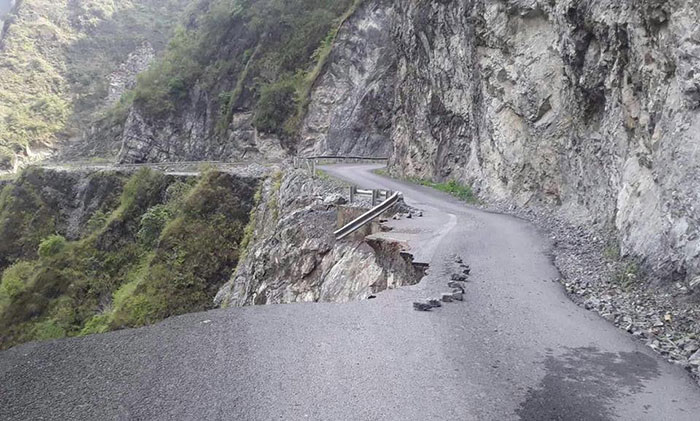Budget allocated is enough for only 60 percent of the restoration work
Yangchen C Rinzin
There have been 869 slips (road damage) in 367 locations in the month of July due to early monsoon this year.
Department of Roads’ (DoR) nine different regional offices maintain the slips.
Sarpang regional office saw the highest slips this time—210 slips occurred in 51 locations. Gelephu-Trongsa highway was the most affected with more than 50 percent of slips. Samdrupjongkhar’s regional office reported 158 slips in 73 locations.
Nganglam-Gyalposhing primary national highway was affected the most, followed by Mikuri-Durungri secondary national highway (Nganglam-Pemgatshel road).
Phuentsholing reported more than 150 slips occurred in 64 locations. Ganglakha-Dungna gewog centre road was the most affected.
While DoR’s mandate is to ensure these roads are open to traffic, monsoon restoration work has been challenging every year, according to the DoR’s director general, Tenzin.
He said that monsoon restoration works were underway and machines were deployed in various areas to clear the slips.
The DoR is usually allocated Nu 187 million for monsoon restoration.
Tenzin said that although DoR had not compiled the entire expenditure for this year’s monsoon restoration projects, the expenses were always more than the budget allocated.
“We usually compile the expenditure only by September and review the restoration works that are most critical and needs attention,” Tenzin said.
He added that budget was enough only for the 60 percent of the restoration works. “If there is a practical damage that require huge restoration work, we cannot do it immediately and keep for next monsoon restoration work. This is why there are many complaints, as roads become worst.”
Without Parliament in session, there is slim chance of getting additional budget.
“We don’t have machines and need to hire from the private individuals. Lack of human resources is also one of the challenges,” Tenzin said. “When there are several slides in multiple areas, it becomes difficult to maintain them all.”
He said that some of the stretches were difficult to maintain because of the geological conditions such as Reotala, box cutting and Khagochen in Dagana.
Tenzin said that for the first time a comprehensive geological study would be conducted for these roads. A work has already been awarded to an international consultant but could not start due to Covid-19.
He said that the experts would not only study the reasons for damage but also prepare the solutions and recommend a design and options. “We have the budget for the study. We need to now look for investment.”
However, roads like Nganglam-Gyalpoizhing highway, road damage during the monsoon was usually because of the topography and steepness, he said. “We need to explore new technology to solve this issue along the highways.”


